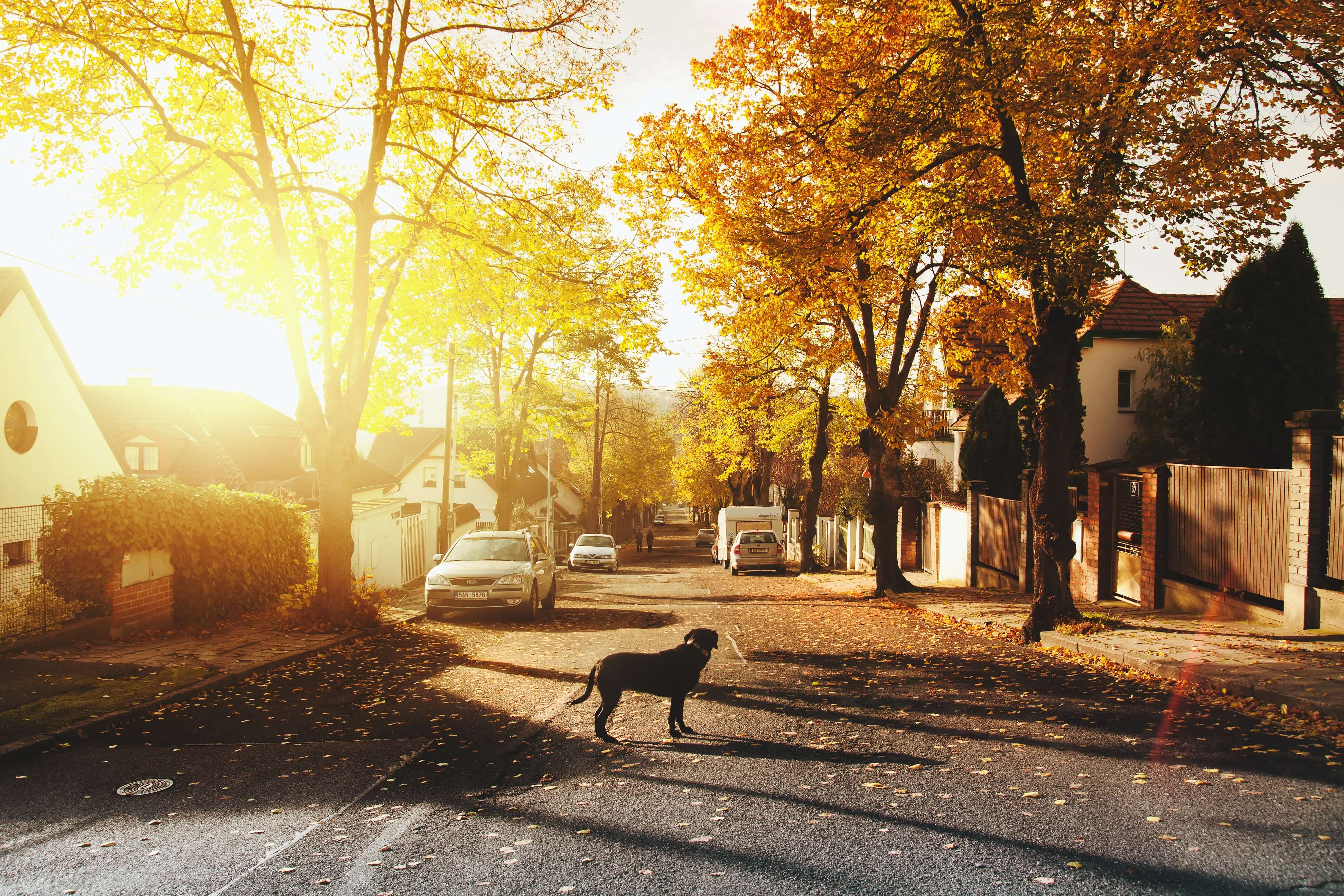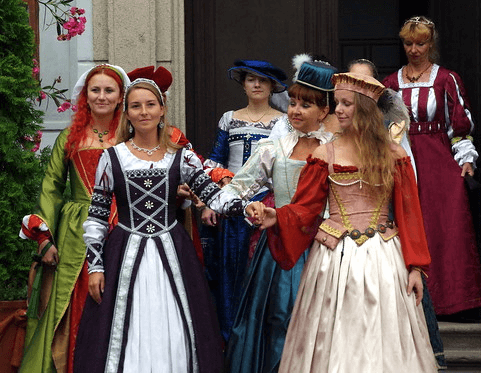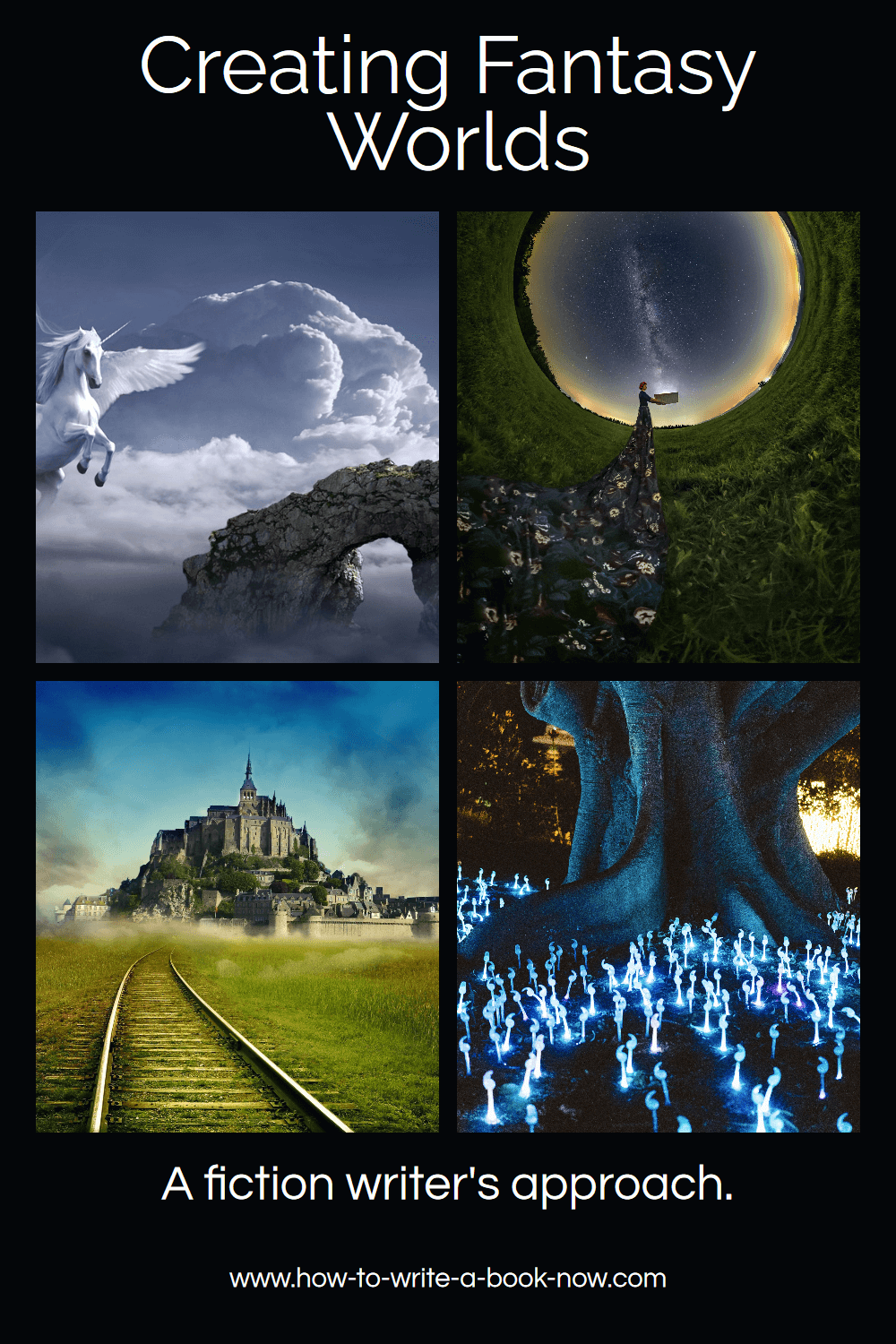6 Types of Fictional Worlds: From Present Day Reality to Realms of Pure Fantasy
By Glen C. Strathy
You can write stories set in many types of fictional worlds, though readers who confine themselves to their favourite genres often forget this fact. Many genres are at least partly defined by the type of setting they feature.
As an aspiring writer, you are probably a voracious reader already. You probably have a sense of the types of stories you are interested in writing, and the types of fictional worlds you are interested in creating or using as settings for your stories.
Nonetheless, it can be worthwhile to consider the full range of fictional settings open to you, because you never know when you may be struck by a new idea or an urge to write in a completely different genre. Stepping outside your comfort zone can lead you to interesting places.
So let's consider the six main types of fictional worlds and what distinguishes them from each other.
Categorizing Fictional Worlds By Departure Point
Virtually all types of fictional worlds have some connection or similarity to the real world, otherwise the reader would have a hard time understanding the story and relating to the characters. At the same time, virtually all types of fictional worlds differ from the real world. What separate ones type from another is...
1. The point where the setting stops resembling reality and starts being made up (what I call the departure point).
2. The extent to which the fictional world departs from reality.
Types of Fictional Worlds That Are Closest to Reality
1. Mainstream, Contemporary Settings
 A contemporary, mainstream setting can show the reader another side of a familiar world.
A contemporary, mainstream setting can show the reader another side of a familiar world.The most common types of fictional worlds are those that closely resembles the real world -- the world the reader recognizes as here and now. Contemporary, real world settings are most often used in genres such as Romance, Mystery, Thriller, Literary Fiction, Suspense, Relationship Fiction, and many others.
Fans of genre fiction sometimes complain that the real world makes for a boring setting. These are the readers who want stories to take them somewhere beyond the world they are familiar with. However, even books set in the real world of today can give the reader the vicarious experience of travelling to a fictional world beyond their everyday experience.
For instance, you can set a story in an exotic location few of your readers will have visited. In fact, before travel became relatively affordable, fiction was a way for average people to learn about foreign places.
Or you can set a story within a social milieu, profession, or spheres of activity outside most readers' experience. Social milieux or exotic locations can be regarded as types of fictional worlds, since every milieu operates according to different rules and expectations. The departure point in such stories is the point where the story leaves behind the environment the reader knows and enters the unknown.
Many readers are less interested in books set in exotic locations and instead enjoy books that explore the world they know, perhaps from the perspective of a character whose life differs from their own. Some readers want a book that helps them see or understand the world they live in in a new way.
However, even when you write a story set in present day reality, you will likely change some things about it. Unless you are writing biography or memoir, the characters in your world will be made up. That means their homes, their workplaces, etc. will also be somewhat fictional -- perhaps based on real locations, but altered to protect the identities of the real life places that inspire them. (More on using real places in fiction.)
2. Historical Settings
 Historical settings may be more or less accurate and detailed depending on the genre.
Historical settings may be more or less accurate and detailed depending on the genre.The next point of departure is time. You can set a story at some point in the past, perhaps as well as in an exotic location or milieu.
Historical fiction is a genre composed of stories set in a time period before the author's birth and intended to educate the reader about history as well as tell a good story. To write historical fiction, you need to do a lot of research about the setting, so you can describe the places and the social milieu accurately. Historical fiction is generally written by and for people who have a special fascination with a particular time period, so it's important to get the details correct. It can feature a lot of "infodumps" -- long passages describing the story world that do little to advance the plot or character arcs. They are, however, appreciated by fans of the genre for their educational value.
You may also use historical settings for stories that don't fall into the genre of historical fiction. (Let that sink in for a moment.) I'm speaking here about writing stories that have a historical setting but do not try to educate the reader on the minutia of history. Sometimes you're just trying to tell a good story that happens to take place in the past. As with any good story, your setting must be plausible. It must be consistent with what is known about the setting. But you will not use infodumps. You will not delve into details of the historical period unless they are vital to the story. The setting is the backdrop for your story, not the focal point.
You may also write stories using historical settings whose historical accuracy is questionable. For instance, some stories are set in idealized or romanticized versions of history. Westerns, for example, may be set in a version of the Old West that is modified to heighten certain aspects of storytelling (e.g. adventure or romance) or fit certain thematic messages (e.g. redemption, independence).
Some writers favour revisionist versions of historical places. For instance, scholars may differ in their evaluations of certain historical events and periods, though often one school of thought may be traditional or dominant. Revisionist history may take the other side and present a less accepted version of a time period. As a writer, you may use a revisionist version of history as your setting if it better suits your themes or simply to make your story more interesting. Just be aware your reader may come to the story with preconceived notions about your setting that you may need to address.
Types of Fictional Worlds That Differ From Reality
3. Settings in Low Fantasy
 Low fantasy settings resemble the real world, but with the addition of fantastical places, things, beings, powers, etc.
Low fantasy settings resemble the real world, but with the addition of fantastical places, things, beings, powers, etc.I noted above that even when you write mainstream stories, you will probably add some fictional elements -- places that do not exist in the real world, or that you have changed for the sake of the story. Nonetheless, the made up places must seem like they could be real places. They must adhere to all the things we know about the real world -- geography, the laws of physics, etc.
Speculative fiction, on the other hand, takes place in types of fictional worlds that are quite unlike the real world. They still must be plausible. But the rules of plausibility are a little different.
Fantasy stories in particular are set in story worlds that do not, never have, and could not exist in exist in reality. Nonetheless, such settings must be internally consistent in order to be plausible. They must follow a set of rules. But the rules don't have to be entirely those of the real world. You are free to modify the rules or make up new rules in order to explore questions like, "What if X were true?" (X being whatever you imagine it to be).
There is probably no limit to the types of fictional worlds possible in fantasy. But we'll start with the broadest categories, starting with the story worlds most often seen in the low fantasy and horror genres.
Low fantasy stories are set in worlds that resemble the real world except that there are fantastical elements added to it, such as imaginary settings.
In low fantasy, you can have places where magic happens, or where magical species live, or where your characters can experience things not found in reality (which is the fun of such stories). The departure point is the place where where the setting stops resembling the real world and starts being fantastical. So your setting is what the real world would be like if certain fantastical places were a part of it.
Low fantasy stories often concern a character who lives in the real world, but in the course of the story enters a fantastical part of the world that was previously unknown to them. The readers can then enjoy imagining they could have such an experience themselves. When writing such stories, you often must invent some reason why the fantasy places are unknown. If, within the world of the story, places like Shangri-la, Hogwarts, Avalon, or Atlantis actually exist, why doesn't everyone in the story world know about them? Why is their history not common knowledge?
In fact, it's important in many low fantasy stories that the fantasy places are secret. If they were not secret, they would have affected the real world and vice versa throughout history. For example, if there was a remote part of the world where dinosaurs still lived, Western civilization would probably have found a way to exploit them long ago. Both the "real world" and the fantasy world would have evolved differently by influencing each other. The same would be true if your setting is going to include a kingdom of elves or some other magical civilization.
Writers have found many ways to explain why few people know about the fantasy places in their stories. The places may be "unplottable" (as in Harry Potter). Or perhaps only certain people are capable of perceiving them (as in Cassandra Clare's Mortal Instruments series). Sometimes you need a magic key, or a map to find the entrance. Sometimes people have their memories erased after visiting the fantasy place, so they cannot tell others what they found. Sometimes travel requires certain technologies only found in the fantasy places (e.g. the fairy dust in Peter Pan). Sometimes the fantasy places only appear at certain times or their location regularly shifts.
This is not to say your fantasy kingdom cannot affect the real world. But whatever affect it has must usually be unknown to the average person. Otherwise, you cannot tell a story about an average person discovering the fantasy kingdom.
4. Settings in High Fantasy
 High fantasy stories are set in worlds that are both impossible and separate from the real world.
High fantasy stories are set in worlds that are both impossible and separate from the real world.High fantasy stories are generally set in a world that is entirely fantastical. It's not just a small, hidden place within the real world. The story takes place in an entire world that is fantastical, impossible, and imaginary.
High fantasy worlds come in two types.
Some high fantasy worlds have a small point of departure or connection between them and the real world. At this location, a few people are able to cross from the real world into the fantasy world, perhaps through some kind of portal. As with low fantasy, this limited access is necessary for the fantasy world to be a secret. If it were not a secret, the real world and the fantasy world would have interacted throughout history and the real world would be quite different as a result.
In C.S. Lewis's The Lion, the Witch, and the Wardrobe, some children can travel to the fantasy world of Narnia by passing through a magic wardrobe. In Edgar Rice Burroughs's novel, A Princess of Mars, one person is able to be transported from Earth to the planet Mars (or at least a fantasized version of it quite unlike the real Mars) by stumbling upon a secret cave. You may need to invent a reason why large numbers of people do not know about or use the portal.
Other high fantasy stories are set in fictional worlds with no connection to the real world, or at least not one that can be traversed by any character in the story. These stories take place entirely in the fantasy world and feature a cast of characters who are native to that world. For example, no one can travel from today's world to J.R.R. Tolkien's Middle Earth, which is set in a imaginary version of Earth's ancient past. No one from Earth can get to the world where Andzej Sapkowski's novels about The Witcher are set.
When creating a high fantasy world, you are free to decide if it exists on another planet, in the distant past or future, or in another dimension or parallel universe. If it doesn't matter to the story, you may give no explanation about where the fantasy world exists in relation to our time and reality.
When you create a high fantasy world, you are free to invent an entirely original geography and environment. You are free to borrow elements from the real world, but also make changes and introduce elements that make it different. You may include imaginary species. You may give the world certain imaginary properties. Perhaps magic, or destiny are real forces in your world (as in the Robert Jordan's Wheel of Time series). Perhaps the gods and demons of your fantasy world are real.
Fictional Worlds Based on "Forks in the Road"
5. Alternate History Settings
Alternate history is a subgenre of fantasy that takes place in a world that shares a common history with the real world -- but only up to a certain point in history (which is the departure point). At that key point, something happened in the story world that changed how history unfolded from then on. It is as though there was a fork in the road, and history took a different path. Because of that change, history unfolded differently, resulting in a story world that is much different from the real world.
For instance, Philip K. Dick's novel, The Man in the High Castle, takes place in a world where Germany and Japan won World War II. As a result, in the 1960s, when the story takes place, the US is no longer a sovereign nation, but has been divided. The eastern half belongs to Germany and the Western half belongs to Japan.
The Bartimaeus books by Jonathan Stroud take place in a world in which a group of magicians wielding actual magic took over the British government in the 19th century. As a result, the world of the story, the City of London in the early 21st century, is much like the real world, except that all the powerful people are magic users and the story involves both political intrique and sorcery.
To create an alternative history world as a setting for your stories, you would start by deciding what event in history will be your departure point. What happened differently at that point, and how did the change affect the world moving forward? How would today's world be different because of that one change?
As with historical fiction, having a good sense of history will help in writing alternative history, especially the broad trends.
6. Science Fiction Settings
 Science fiction settings are based on extrapolating from current trends.
Science fiction settings are based on extrapolating from current trends.Science fiction takes place in an imaginary but plausible future. I must make this point clear. Just as not every story with a historical setting is historical fiction in the strict sense, not all stories that take place in a world with futuristic technology are science fiction in the strictest sense.
In proper science fiction, the setting is an extrapolation of current trends in science, technology, and society. In other words, the departure point is today.
To create a science fiction setting, you must look at the trends in today's world and ask yourself what the world will look like in a hundred years or so, if these trends continue. The future setting you create must also be plausible. You cannot involve magic or depart from what is currently known in the sciences without destroying the plausibility readers demand. You might get away with making one or two leaps of faith. For instance, you might speculate that new scientific discoveries may be made in certain fields of research that allow one or two technologies to be developed that seem impossible today. Then you must think through all the implications of such discoveries and account for them in your fictional world. Everything else about the world must seem plausible. Too many impossible technologies will make your story more a work of fantasy than science fiction.
- Home
- Write a Novel
- Setting
- Fictional Worlds






















